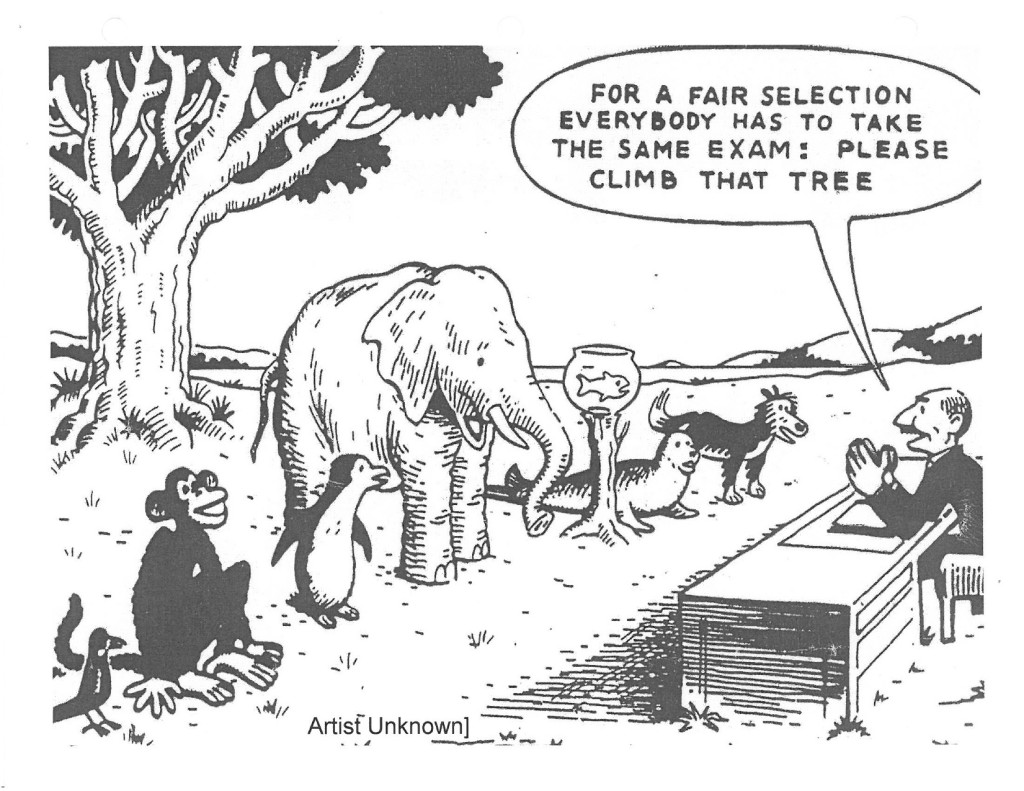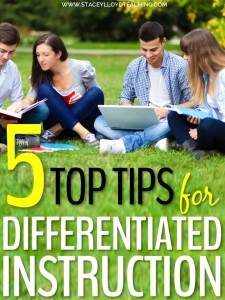Tips for differentiated Instruction

by Adele Levin
Differentiated Instruction (or ‘mixed ability teaching’) is hard. It will not work for the teacher who likes to rock up as the bell sounds and leave when the students do. But then I don’t know any good teachers who do that. Differentiated instruction is, however, good for our students.
But let me be clear: when I talk about differentiated instruction I don’t just mean putting students of different abilities in the same room. That’s just grouping. Differentiated instruction requires a certain style and approach from the teacher in order to develop new skills and strategies in your students’ attitude to their learning.
I could go deeper into the rationale behind mixed ability but right now I simply want to share some of my top tips that I hope will help you in your teaching.
- Know your students. You have a wide range of abilities that need to be stretched and challenged, and this may well change from topic to topic. You need to understand your students – their restraints and their potential; what is exceptional progress for one student will be mediocre for another.
- Think carefully about where you place your students. With their differing abilities in mind, make sure you seat them appropriately. Do not create mini ability-sets in your classroom by having a ‘top table,’ etc. I like to seat my students in groups of four, with a range of abilities in each group. I do avoid having extremes right next to each other but instead aim for a gradation of abilities within each group.
- Plan your activities thoughtfully. Remember, there is more than one way to differentiate. I sometimes set activities at different levels and encourage my students to self-select their level to work at (occasionally with a little guidance from me!). This is where developing their self-awareness is so important. Another strategy I use is rich tasks with different entry points. This allows all students to start at different levels and progress to varying depths.
- Collaborate with other staff. Planning for mixed ability will take you longer. That’s a fact. But this is why collaborating and sharing resources with other staff is so valuable. The beauty of a mixed ability department is that you’ll always have lots of other resources to draw on as everyone targets a range of abilities.
- Make use of group work. I love group work for all classrooms, subjects and ages, and assigning particular roles to each student in a group – while changing them up from lesson to lesson – is a great way of encouraging and training them all to participate. And trust me, they do need training! In mixed ability classrooms, group work becomes even more meaningful: it is such a delight to see confident students explaining new concepts and reserved students seeking help from their peers. Your students will surprise you too- sometimes the students we identify as being less able make the best peer teachers. This of course consolidates their understanding, boosts their confidence and benefits the student they helped. So, not only are all students enhancing their knowledge and understanding of the subject we love to teach, but they’re developing invaluable social skills that they can carry with them into all aspects of life.
I really hope these tips help you in your teaching and also give a little glimpse into the amazing benefits for our students in teaching mixed ability classes. For more information on the research and arguments for mixed ability I highly recommend Jo Boaler’s research.
Adele Levin is the head of math at a large school in the UK. She also sells her teaching resources on Teachers Pay Teachers – products often designed to aid differentiated instruction. For a sample of her work, you can grab her FREE Algebra Team Challenge TASK CARDS here.

